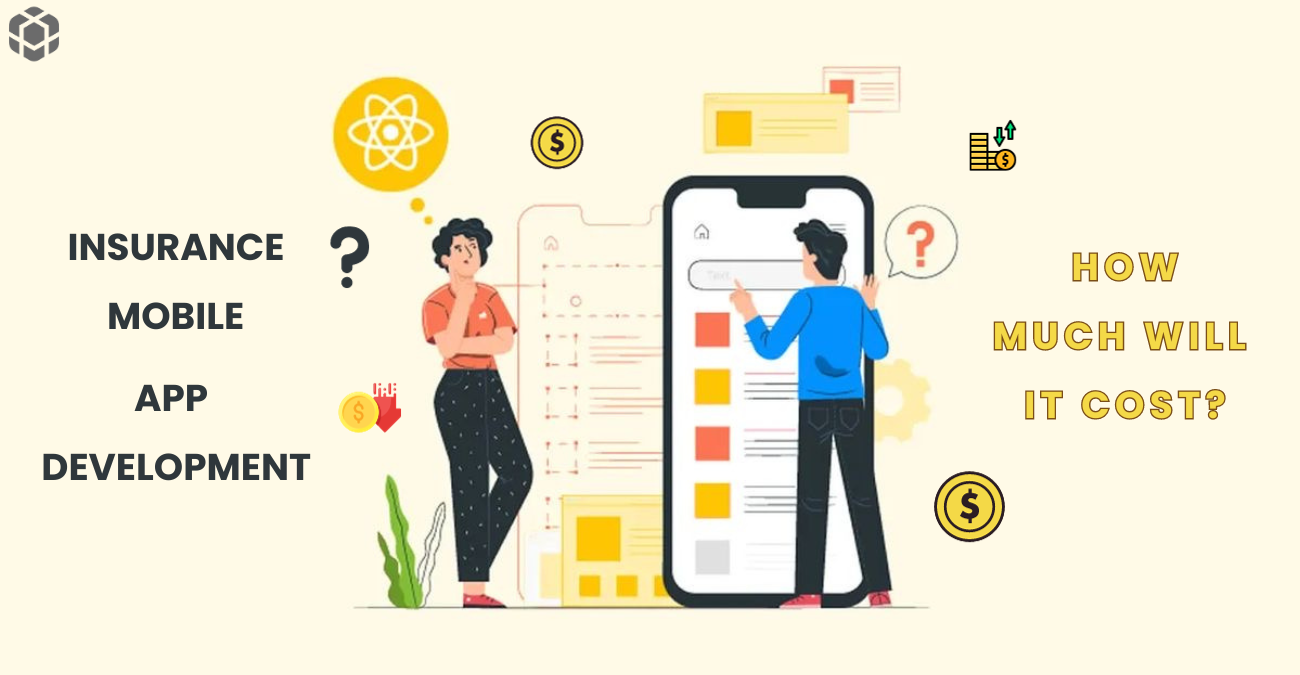
In a world where people rely heavily on technology in their daily lives, it is no surprise that even insurance is bought digitally through insurance apps. The insurance app market is a rapidly growing one, as people prefer to make these purchases without the hassle of dropping by the actual location.
Moreover, these mobile apps are highly advanced and provide all policy management-related facilities on a single platform, which makes them highly convenient and everyone’s first choice.
What is an Insurance App?
Insurance apps are a modernized channel of purchasing insurance, designed and developed by insurance companies to provide various services and functionalities related to insurance on smartphones or tablets. It effectively enhances the communication between insurance agents and customers.
The apps serve as a comprehensive platform to provide various facilities to the customer, including access to insurance information, manage policies, and perform other transactions. In a way, insurance mobile apps resemble banking apps with additional features.
Overview of insurance mobile app development
The development process and costs associated with creating insurance mobile apps can vary based on factors such as features, complexity, platform, and the development team’s hourly rates.
However, the most difficult part is getting started with the development process. Before hiring development services, you need to come up with an idea and carry out extensive research in the particular domain. After those ideas are finalized and monetized, you can move on to hiring services and communicating your requirements to them.
From here onwards, the development team takes care of creating an app that fully satisfies your needs. Even a simple app can require up to 300 hours of development time due to the extensive nature of the process. Furthermore, there are a number of factors that will be covered in more detail later in this article that affect how much it costs to develop an insurance mobile app.
Types of insurance mobile apps
Insurances can be distributed into various categories, each of which requires the development of a specified app that consists of all the relevant features. Therefore, even though many of the features in these apps are similar, the development costs of various insurance mobile apps vary.
Here are a few types of insurance mobile apps:
Health Insurance App
Since health insurance is the most popular kind of insurance, the industry for insurance app development is primarily driven by health insurance applications. A health insurance app may involve features like policy management, claims processing, access to health records, wellness tracking, and possibly integration with healthcare providers.
Healthcare-related features are fairly complex, so the cost of developing an insurance app in this domain is usually high and requires specialized teams that are knowledgeable about types of health insurance. Integration with healthcare systems may also contribute to the overall cost.
Car Insurance App
Auto insurance is another popular type that dominates the insurance market. For most drivers, these insurance apps are a lifesaver because it is illegal to drive a vehicle without insurance.
People like to invest in car insurance apps as car accidents are very common, and almost everyone possesses this insurance. Car insurance platforms include features such as claim filing, product cart, automobile service listings, etc. The cost of developing a car insurance app depends on the number and complexity of features.
Life Insurance App
Life insurance apps are developed to provide easy access to policyholders to various features such as policy tracking and management. These apps aim to enhance customer experience, streamline processes, and allow users to manage their life insurance policies efficiently.
They are a great way to tap into the insurance industry, as these are relatively more straightforward apps with customizable features.
Travel Insurance App
Frequent travelers are most concerned about their safety and make use of travel insurance as a safety net from unpredictable situations. Travelers can choose and reserve their insurance with ease and portability thanks to these travel insurance applications.
Travel insurance apps usually include features such as policy management, trip planning assistance, claims processing for travel-related incidents, and possibly integration with travel services.
Features of an insurance mobile app
Features that are included in almost all types of mobile insurance apps, whether it be car insurance, health insurance, travel insurance, etc., are as follows:
- User Authentication and Onboarding
- Purchase, renew, or update insurance policies
- Easy and intuitive claims submission
- Secure payment gateways
- Push notification for policy reminders
- Communication and support
- Access to a personal claims history
- Resources such as articles, FAQs, and videos to educate users
- Encryption of sensitive data to ensure user privacy
How much does it cost to develop an insurance mobile app?
The cost of developing an insurance mobile app can fall anywhere between $30000 to $50000. This broad estimate is justified by the fact that several variables, such as the app’s complexity, the tech stack being utilized, and the kind of team overseeing the project, affect development costs.
Complexity of the app
Insurance mobile apps can be categorized into three different complexities based on the type and number of features included in the app.
Basic applications: Typically, the development process is concentrated on creating a Minimum Viable Product (MVP) that can satisfy the customers’ requirements to some extent.
Key features include:
- Basic policy management
- User authentication
- Help and support
- Service claims
Complex applications: These applications have extra features on top of the basic ones, but these features are crucial in providing the highest level of customer comfort.
Key features include:
- Integrated payment processing
- Real-time quotes
- Payment reminders
- User-friendly interface
Highly complex applications: These apps’ primary goal is to solve as many issues as possible on a single platform, and they accomplish this by adding more complex functionality.
Key features include:
- AI integration
- Advanced data analytics
- Offline Functionality
- Integration with IoT Devices
Technology stack used for app development
Frontend development: The front end of any application is a key area where most resources are spent to make it as appealing and user-friendly as possible. Insurance applications have a range of features, but they also require a simple interface accessible by people of all demographics.
Tech stacks such as Java and Kotlin are commonly used to develop these apps for Android platforms. Frameworks like Flutter or React Native can be affordable for a cross-platform approach.
Backend development: Backend development of all applications is a complicated task that requires expertise in programming languages. Some commonly used programming languages include Python, Ruby, and Java. Not only do they increase development speed, but they also reduce development costs as most people are skilled in these languages.
Teams involved in app development
In-house team: Opting for an in-house development model, wherein insurance startups hire developers as full-time employees within their organization, presents multiple advantages and challenges.
Aside from smooth communication, the development team can better align their efforts with the overall vision of the company when there is regular interaction. Additionally, having sensitive consumer insurance policy details within the startup environment ensures a higher level of data security and confidentiality.
However, this employment model is the most financially demanding among the available options. While it allows startups to exercise complete control over the development process and the deliverables, it also entails substantial responsibilities. Meeting tax obligations and other employee-bound commitments can significantly impact the financial resources of the startup.
Beyond the direct employee-related costs, there are hidden expenses associated with this model, including office maintenance and equipment revamping.
Freelance team: A freelance individual or team is a popular choice for development work, especially mobile apps. Although it is a cost-effective option and doesn’t involve direct management of working individuals, it has a few disadvantages.
Insurance companies process sensitive data, such as the health status information of their customers, which shouldn’t be at risk of unauthorized disclosure. Data security is a major issue when individuals are hired without any proper contract from job search platforms. Additionally, freelance workers tend to work on their own terms and might not adhere to proper work standards and deadlines, which leads to several issues.
Outsourcing agency: Hiring an outsourcing agency to develop your insurance mobile app is probably the most viable option as it entails a lot of benefits for the hiring company. Apart from being cost-effective, this method allows the organization to be free of any responsibility of directly managing the employees and instead focus on other crucial tasks.
Moreover, outsourcing agencies consist of service providers that are highly skilled in their domains. For example, you can rely on an outsourcing company to have sufficient expertise with health insurance and to deliver guaranteed results if you hire them to create an app for your company’s health insurance program.
Regarding data security, you can also feel secure knowing that these businesses are legally obligated to follow the law, and you have the right to protest any violations.
How can we reduce the cost of insurance mobile app development?
In order to follow a cost-effective route for developing your insurance mobile app, the first thing you need to do is strategize your actions and start the developing process once you have a solid plan.
One way you can reduce the cost is by prioritizing features that are of higher significance and form the structure of the app. It is okay to omit features that are purely decorative as long as they don’t increase the product’s worth.
Moreover, you can also outsource development to benefit from cost reduction. It is more practical to use third-party service providers rather than hiring in-house employees to create these mobile applications since they do not put a financial strain on your business.
Do you want to invest in insurance mobile app development?
Insurance mobile app development is a rapidly growing market, and the trend is only going to increase in the future. If you are interested in tapping into the insurance market, then this is the right time.
You can start by gathering information about the types of insurance and specify a niche for your app. Also, consider outsourcing the development process to BPO companies such as Codesy Consulting, which provides specialized IT services. This will not only save you money, but you’ll be receiving a guaranteed product.





